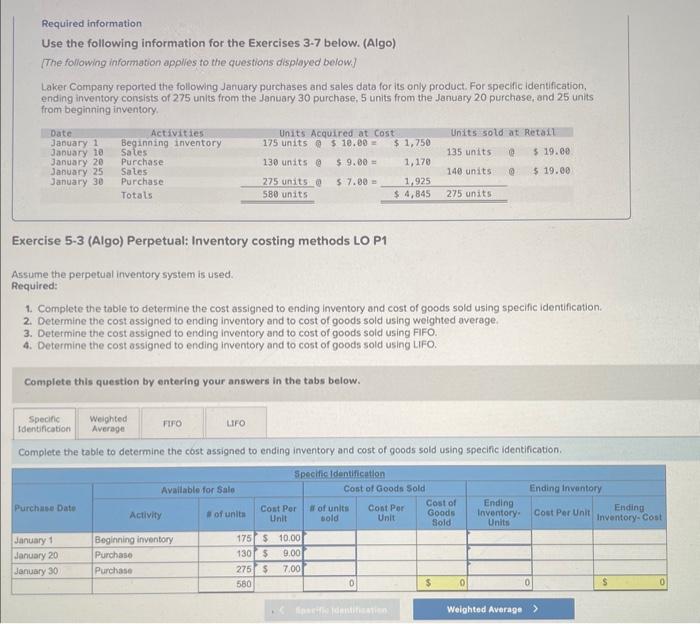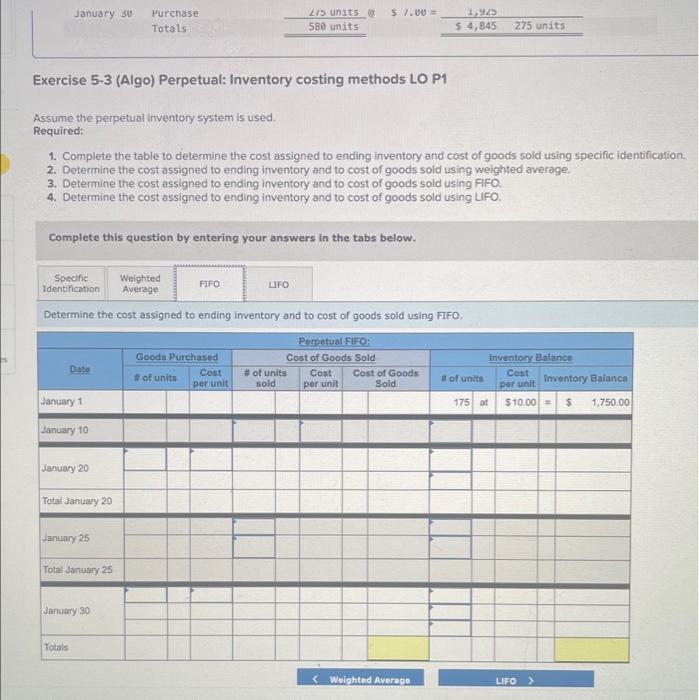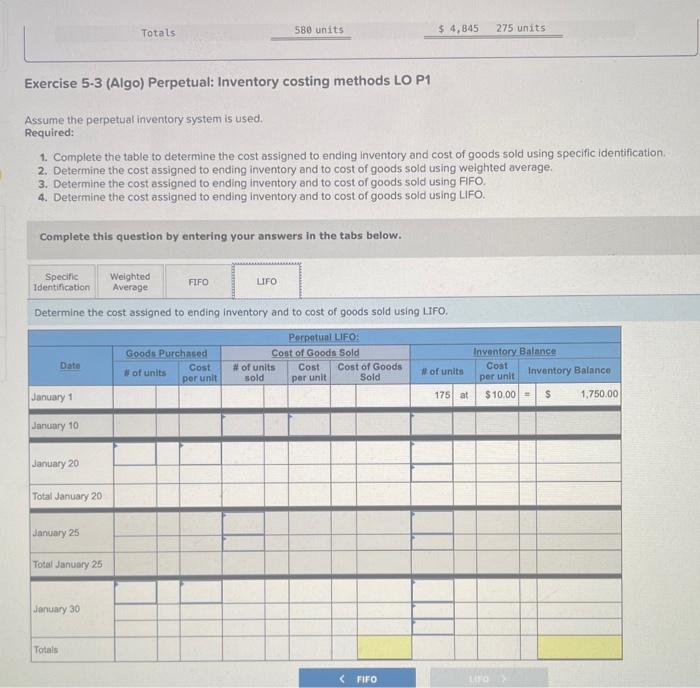Required information Use the following information for the Exercises 37 below. (Algo) [The following information applies to the questions displayed below] Laker Company reported the following January purchases and sales data for its only product. For specific identification, ending imventory consists of 275 units from the January 30 purchase, 5 units from the January 20 purchase, and 25 units from beginning inventory. Exercise 5-3 (Algo) Perpetual: Inventory costing methods LO P1 Assume the perpetual inventory system is used. Required: 1. Complete the table to determine the cost assigned to ending inventory and cost of goods sold using specific identification. 2. Determine the cost assigned to ending inventory and to cost of goods sold using weighted average. 3. Determine the cost assigned to ending inventory and to cost of goods soid using FIFO. 4. Determine the cost assigned to ending inventory and to cost of goods sold using LIFO. Complete this question by entering your answers in the tabs below. Complete the table to determine the cost assigned to ending inventory and cost of goods sold using specific identification. from beginning inventory. Exercise 5-3 (Algo) Perpetual: Inventory costing methods LO P1 Assume the perpetual inventory system is used. Required: 1. Complete the table to determine the cost assigned to ending inventory and cost of goods sold using specific identification. 2. Determine the cost assigned to ending inventory and to cost of goods sold using weighted average. 3. Determine the cost assigned to ending inventory and to cost of goods soid using FIFO. 4. Determine the cost assigned to ending imventory and to cost of goods sold using LFO. Complete this question by entering your answers in the tabs below. Determine the cost assigned to ending inventory and to cost of goods sold using weighted average. Note: Round cost per unit to 2 decimal places: Exercise 5-3 (Algo) Perpetual: Inventory costing methods LO P1 Assume the perpetual inventory system is used. Required: 1. Complete the table to determine the cost assigned to ending inventory and cost of goods soid using specific identification. 2. Determine the cost assigned to ending inventory and to cost of goods sold using welghted average. 3. Determine the cost assigned to ending inventory and to cost of goods sold using FFO. 4. Determine the cost assigned to ending inventory and to cost of goods sold using LIFO. Complete this question by entering your answers in the tabs below. Determine the cost assigned to ending inventory and to cost of goods sold using FIFO. Exercise 5-3 (Algo) Perpetual: Inventory costing methods LO P1 Assume the perpetual inventory system is used. Required: 1. Complete the table to determine the cost assigned to ending inventory and cost of goods sold using specific identification. 2. Determine the cost assigned to ending inventory and to cost of goods sold using weighted average. 3. Determine the cost assigned to ending inventory and to cost of goods sold using FIFO. 4. Determine the cost assigned to ending inventory and to cost of goods sold using LFO. Complete this question by entering your answers in the tabs below. Determine the cost assigned to ending inventory and to cost of goods sold using LIFO










